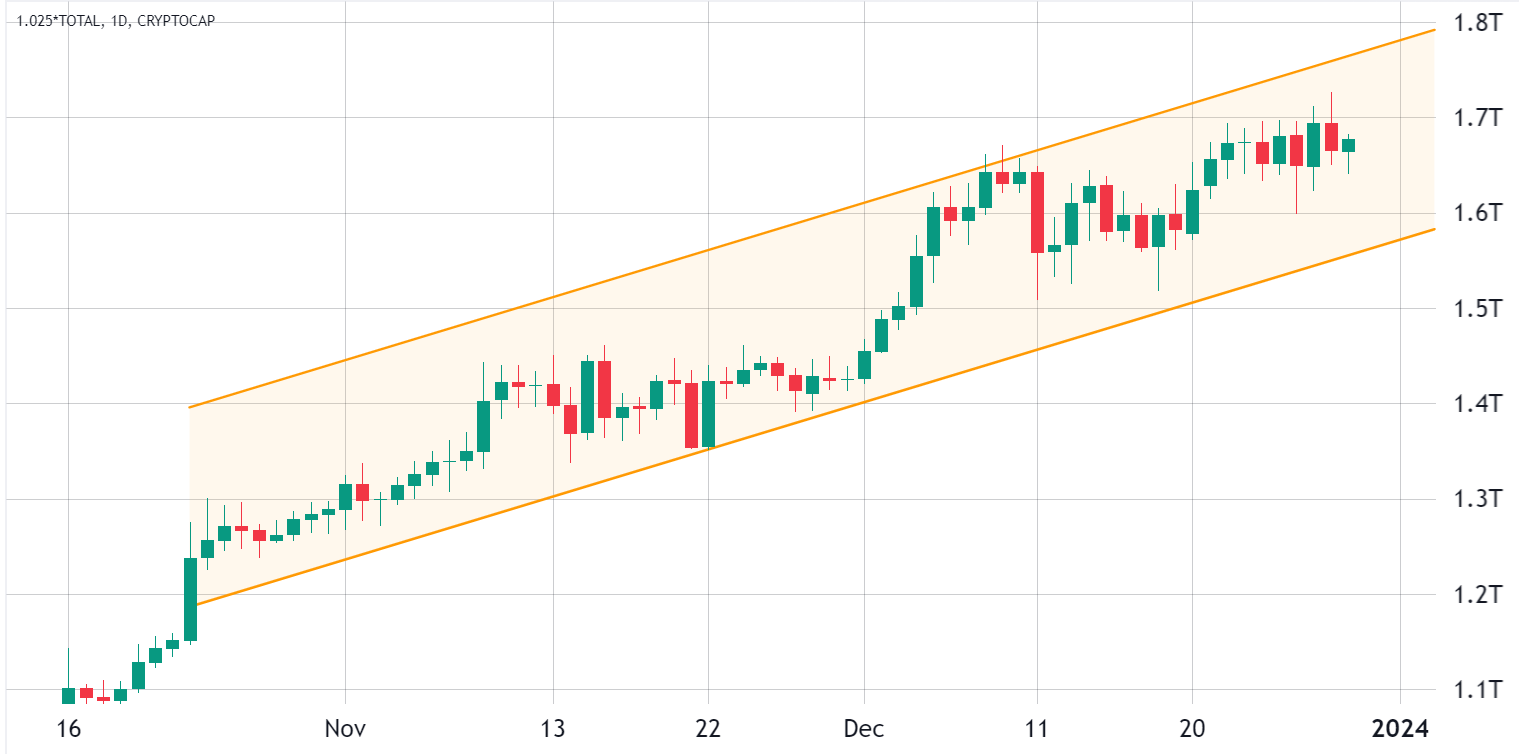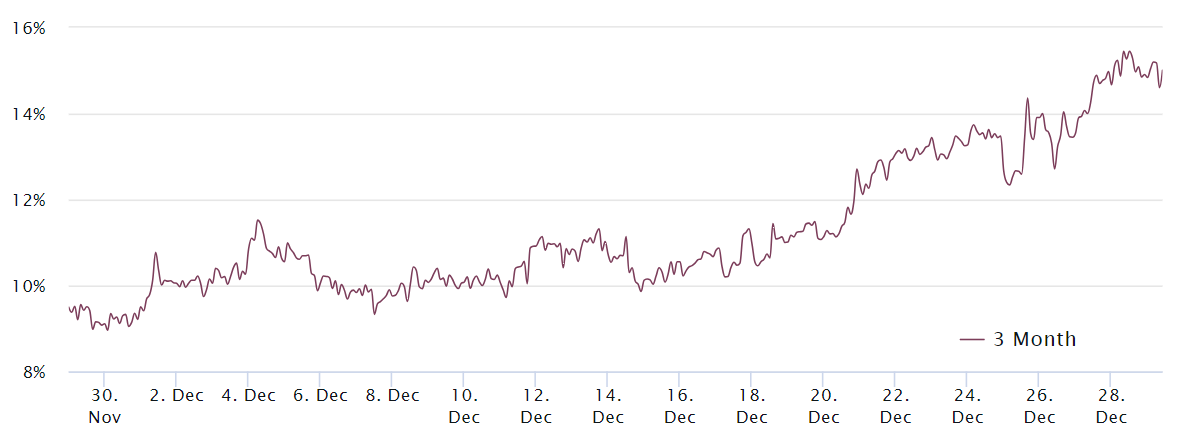The cryptocurrency market’s capitalization metric has been trading within a relatively narrow upward channel for the past 10 weeks. This indicates that bullish momentum has remained intact despite recently failing to break above the $1.7-trillion market cap resistance.
In December, Bitcoin’s (BTC) price made 20-month highs above $44,000, and Ether’s (ETH) upswing was stropped at $2,400. Some analysts argue that the excessive demand for leveraged longs (buying) will trigger a correction, but is that really the case?

Regardless of whether the ongoing bullishness has been driven by the expectation of a spot Bitcoin exchange-traded fund (ETF) approval by March, the odds of cascading liquidations exist when traders heavily rely on futures markets.
This is why analysts monitor leverage demand to assess the risk of a sell-off driven by derivatives markets. Let’s take a closer look at how this is done.
Pro traders are (moderately) bullish on Bitcoin
To determine how whales and market makers are positioned, one should analyze the Bitcoin futures premium, also known as the basis rate.
Professional traders prefer monthly contracts due to the absence of a funding rate, which causes these instruments to trade 5%–10% higher relative to regular spot markets, justifying the longer settlement period.

Data reveals that the three-month Bitcoin futures premium has remained above the 10% neutral threshold since De
Go to Source to See Full Article
Author: Marcel Pechman
